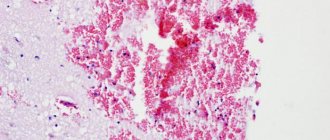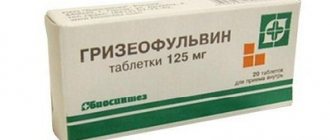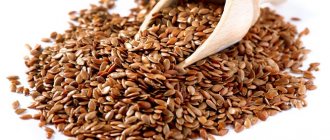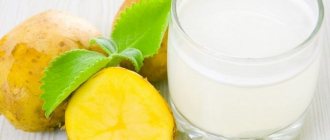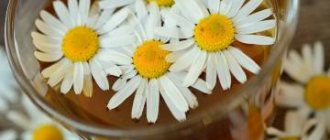With atrophic gastritis, the cells of the stomach walls cease to perform their function, that is, to produce secretion, which is a component of gastric juice. Initially, the glands transform and synthesize mucus, which is unable to aid digestion, and then completely lose their ability to secrete.
Focal atrophic gastritis affects some areas of the mucosa, their “inaction” is compensated by healthy tissue. The antrum develops at the place where the stomach passes into the duodenum and then spreads throughout the organ.
The danger of the disease lies not only in the fact that the process of food digestion is disrupted (this can be easily corrected with the help of medications), but in the fact that the disease can lead to stomach cancer. Cells that have undergone the atrophic process can no longer be restored. But the patient must undergo therapy to prevent the development of the disease.
Treatment should include the destruction of the Helicobacter bacterium, which affects the pathogenesis of the disease, and taking medications to help digest food and relieve inflammation.
Oat infusion
Oats have long been considered an excellent folk remedy for treating all disorders affecting the digestive system. It is used for the prevention of atrophic hypoacid conditions of the stomach, for treatment. A special infusion is prepared from oat grains to treat chronic gastritis. You will need to grind the grains, not to the consistency of flour. 2 tablespoons of the resulting powder are poured with 400 milliliters of boiling water and the mixture is allowed to brew. The optimal solution would be to place the mixture in a thermos for 5-6 hours.
When the resulting decoction is thoroughly infused, it is filtered and taken twice a day before meals. You will need half a glass per serving. The course of therapy continues for a month. Taking it regularly, patients feel improvement within the next few days.
Flax seeds
People knew about the benefits of flaxseeds in ancient times, without even realizing what a storehouse of vitamins, amino acids and macroelements it was. When they talk about the treatment of gastritis with folk remedies, reviews about the medicinal properties of flaxseed oil are only positive, and for good reason:
- It relieves inflammation.
- Heals erosions and small ulcers.
- Relieves pain during periods of exacerbation of the disease.
But there are also contraindications for which diseases or conditions it is not recommended to drink it:
- During pregnancy or breastfeeding. There is no data on the effects of flaxseed oil on women during this period, since such studies have not been conducted.
- For cholecystitis and pyelonephritis.
- If you have allergies, asthma, diabetes and acute pancreatitis.
Gastritis in any form can be treated with a decoction of flax seeds. It is no less effective, but has no contraindications. 5 g of seeds for 30 minutes is enough. Boil in 200 ml of water over low heat, leave and take according to tbsp. l. before eating. Reviews say that if you don’t have time to prepare a decoction, you can simply take 1 tsp. seeds and chew them thoroughly, followed by water.
Sea buckthorn oil
Sea buckthorn oil has excellent regenerative and anti-inflammatory properties, promotes the healing of wounds, erosions and ulcers, which has earned it high popularity in folk medicine. It is rich in vitamins and microelements.
Popular method: pour 2 teaspoons of sea buckthorn oil into a glass of warm cow's milk. Mix the mixture thoroughly. A glass is drunk in the morning on an empty stomach. The full course of therapeutic effects lasts a month. The sooner treatment with folk remedies is started, the more useful it will be, and the sooner recovery will occur.
Juices for the treatment of gastritis
To restore damaged gastric mucosa, it is useful to regularly consume fresh juices squeezed from certain vegetables or fruits. They help restore normal function of the gastric glands and eliminate the inflammatory process. Mixtures of vegetable and fruit juices have the best effect.
You can squeeze juice from cabbage, fresh tomatoes and lemon and mix in equal proportions. Dilute the resulting mixture in half with boiled water. This composition can be taken in the form of a medicine shortly before meals, or used as a drink for meals.
It is recommended to squeeze potato juice from fresh root vegetables, which should not contain greens. Half a glass of juice is drunk before meals. The taste of such juice is not very pleasant; if you don’t want to consume the juice in its pure form, you can add any fruit or carrot juice. This drink has a pronounced analgesic effect and can replace the drug Almagel in this regard. If the level of acidity in the stomach is increased, potato juice will reduce it to normal levels and allow you to stay healthy for a long time.
In addition to potatoes, you can take juice from carrots, cabbage, and beets.
Regeneration after taking antibiotics
Today the problem is quite relevant. The evidence of the disorder after taking medications is beyond doubt. Almost all antibacterial drugs used orally have a pronounced effect. They not only affect the functioning of the mucous gastrointestinal epithelium, but also completely destroy the beneficial flora. The result is the opposite: a person cannot refuse antibiotics if a bacterial infection is present in a laboratory test.
Antibiotics disrupt the defenses of the digestive organs. The main role in protection belongs to the group of prostaglandins . These physiologically active components relax and contract the smooth muscles of the gastrointestinal canal, regulate secretory function, without them the work of digesting food is impossible.
After completing an antimicrobial course, prostaglandins lose their functionality, and the following disorders occur in the body:
- the secretion of polysaccharides, which are needed for the formation of mucus lining the inside of the stomach, decreases to reduce the aggression of gastric juice;
- pathogenic microflora grows and multiplies;
- the production of hydrochloric acid increases, which upsets the acidity balance;
- The smooth muscles of the stomach and intestines inactively move food along the digestive tract.
Phytotherapy
With the help of a number of herbal decoctions, it is possible to eliminate the clinical signs of severe inflammation in the stomach. In particular, you can prepare a useful composition for herbal treatment.
Herbal recipe 1
To prepare a herbal decoction, you will need crushed medicinal herbs in the following proportions: chamomile 20 grams, elderberry the same amount, peppermint and lemon balm leaves 15 grams each, fennel and cordifolia flowers 10 grams each.
Mix the resulting herbal composition of crushed and dried components thoroughly and pour a spoonful of this mixture into a glass container. Pour 200 grams of boiling water over it and put on low heat for 10 minutes. Use the resulting composition 100 grams three times a day. After eating, an hour must pass before you are allowed to drink the decoction.
Recipe 2
A phytotherapeutic recipe is no less effective:
- Take chamomile, mint, St. John's wort and plantain leaves in equal quantities.
- Grind the herb well and pour boiling water over it.
- The decoction will need to steep for one hour.
- Drink a quarter glass several times a day.
The course of taking the decoction lasts at least a month.
Recipe 3
A new effective medicinal collection for the treatment of atrophic gastritis.
- Take 2 or 3 herbs in any combination from the list: burdock herb, plantain leaf, wormwood herb.
- Grind and pour boiling water. It is permissible to leave the composition in a thermos overnight. Drink the resulting decoction the day before, and prepare a new portion of the medicine the next day.
All the described medicinal plants have a pronounced anti-inflammatory and wound-healing effect, normalize appetite and promote the regeneration of damaged epithelium.
Recipe with parsley roots
Such a well-known herb as parsley has a whole list of useful qualities and properties and can be successfully used in the treatment of various ailments. It is necessary to dig up the fresh roots of this plant, thoroughly wash and dry them, and then chop them. The resulting mass will require three tablespoons. Pour the mixture into a full glass of boiling water and leave it to stand overnight. The infusion should be taken one tablespoon before meals.
What is it, symptoms, causes and consequences
Atrophic gastritis is a form of chronic gastric disease caused by the bacterium Helicobacter pylori. With this type of gastritis, there is a gradual decrease in the secretion of hydrochloric acid. As a result, the walls of the stomach are constantly injured and thinned, and ultimately the tissue of the affected organ dies.
Symptoms:
- pain in the epigastric region;
- pain, burning and a feeling of heaviness in the stomach after eating, even if the meal was not large;
- loss of appetite, and, as a result, weight;
- heartburn in the throat and burning in the esophagus in the later stages;
- constant weakness.
Causes:
- Helicobacter infection;
- autoimmune processes in the body;
- bad habits;
- unhealthy and irregular diet;
- exposure to chemicals;
- uncontrolled taking of pills.
The insidiousness of the disease lies in the fact that it is not always possible to cure it surgically, since large areas of the mucous membrane can be affected. If atrophic gastritis is not treated in any way, then over time it can degenerate into oncology.
Folk recipes based on calamus roots
Calamus is a plant that increases the secretion of hydrochloric acid in the stomach. It contains a lot of ascorbic acid, essential oils and gum. There are several recipes for traditional healers based on calamus roots.
- A special medicinal tincture is prepared from crushed calamus rhizomes. 20 grams of rhizome are infused with 100 grams of vodka. Exposure time – 2 weeks. The tincture is filtered and pressed. The finished product should be stored in a dark, cool place. To cure atrophic gastritis of the stomach, 15 drops of tincture are drunk before meals.
- The water infusion is prepared as follows: crushed calamus rhizomes in the amount of one teaspoon are poured into a glass of boiling water. The resulting product must be infused for 20 minutes. You need to drink half a glass.
- Calamus root can be added to a medicinal mixture: 10 grams of calamus roots, 10 grams of wormwood herb, 10 grams of three-leaf watch, 10 grams of caraway fruits.
Diet
Is it possible to cure chronic atrophic gastritis? A diet for gastritis can not only prevent deterioration, but also speed up the healing process. First of all, you need to avoid smoked foods, canned and pickled foods, give up tobacco and alcohol, fried, fatty, and salty foods. Overeating is just as dangerous as undereating, so the entire daily diet should be divided into several meals and eaten strictly by the hour.
With low acidity, milk, baked goods and fresh bread are also excluded, and with high acidity, fermented milk products, tomatoes, spicy and sour foods, and rich meat soups.
Treatment of hypoacid gastritis
To treat focal inflammatory process in the stomach, accompanied by a decrease in the acidity level of gastric juice, at home using folk methods, it is possible to use remedies.
Recipe 1
Prepare a healing anti-inflammatory infusion from the given list of medicinal plants: 4 spoons of dry knotweed herb (or knotweed), 4 spoons of crushed centaury herb, 3 spoons of crushed yarrow flowers, 2 spoons of peppermint leaves and flowers, 2 spoons of crushed calamus roots, 1 part cumin , 8 spoons of marshweed herb, 8 spoons of plantain leaves. Grind the components thoroughly and mix. Drink a quarter glass. The product is recommended if there is mucosal atrophy.
Recipe 2
Prepare a decoction of the medicinal collection: 4 parts of knotweed herb, 4 spoons of St. John's wort flowers, 3 spoons of blueberry leaves and twigs, 2 spoons of crushed yarrow flowers, 2 spoons of immortelle flowers, 2 spoons of centaury herb, 1 spoon of mint and chamomile flowers. The resulting mixture is poured with water and boiled for 7 minutes, removed from the heat and infused for an hour. Drink a glass of solution 4 times a day.
Recipe 3
The given recipe has proven itself over a long period of time for the treatment of atrophic gastritis.
Take three parts of St. John's wort, 1 part each of immortelle herb, calendula and wormwood. The mixture is poured into a glass of boiling water and infused for 20 minutes. Take 50 ml three times a day.
Recipe 4
In folk medicine, an effective remedy is known to restore the gastric mucosa. A product made from honey and aloe juice has a good activating and wound-healing effect on the stomach with atrophic gastritis. The components are mixed in equal proportions and left for 2 weeks in a dark place. You will need to eat a teaspoon of the mixture before each meal.
An equally common alternative to this famous recipe is a mixture of agave juice, honey and butter, which must be taken in equal proportions and mixed thoroughly.
Recipe 5
Grind centaury herb, 20 grams of peppermint, mix. Pour 2 tablespoons of the mixture into one glass of boiling water. Drinking a decoction aimed at restoring the mucous membrane is required in a glass before meals.
Recipe 6
Candied plantain will be an effective remedy for hypoacid conditions of the gastric mucosa. Half a kilogram of fresh plantain leaves is crushed and mixed with a glass of granulated sugar. Keep the resulting mass for 2 weeks and eat 2 tablespoons of the mass before meals. Plantain juice has a stimulating effect on the secretory activity of the gastric glands and helps improve digestive processes.
Atrophy of the gastric mucosa: how to treat and restore?
For rehabilitation, which does not depend on the duration of the course, the following activities are carried out:
- drugs that have the effect of prostaglandins or their analogues are prescribed;
- reparants are used , they heal damaged areas;
- tests are carried out to detect Helicobacter pilori ;
- treatment is carried out under fibrogastroscopy .
The acidity level is also determined and then adjusted using medical means. High acidity is treated with antisecretory drugs, low acidity is treated with replacement therapy. When Helicobacter is detected, the classic elimination scheme is used.



